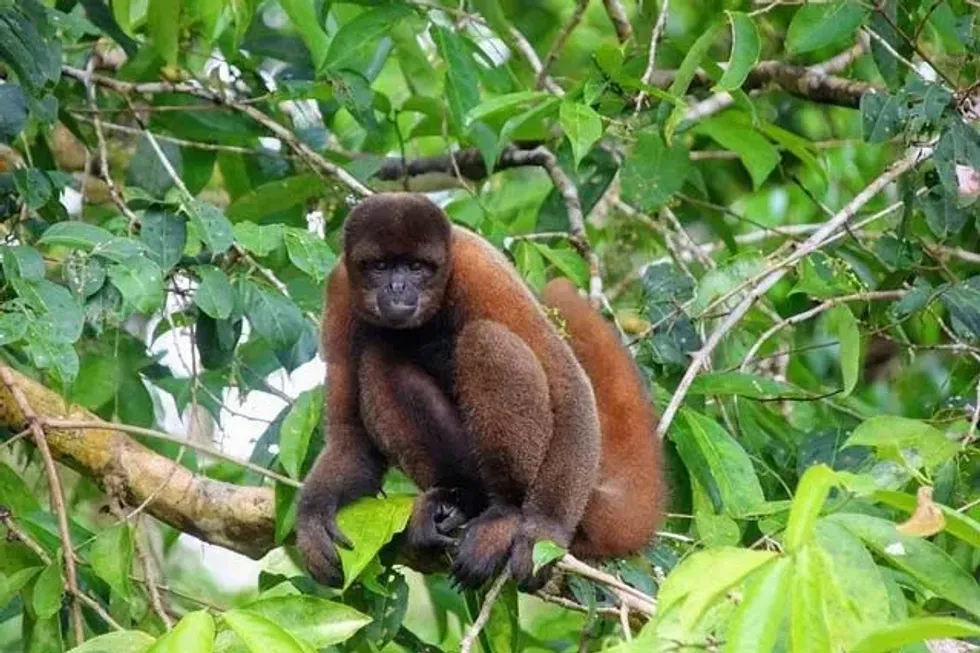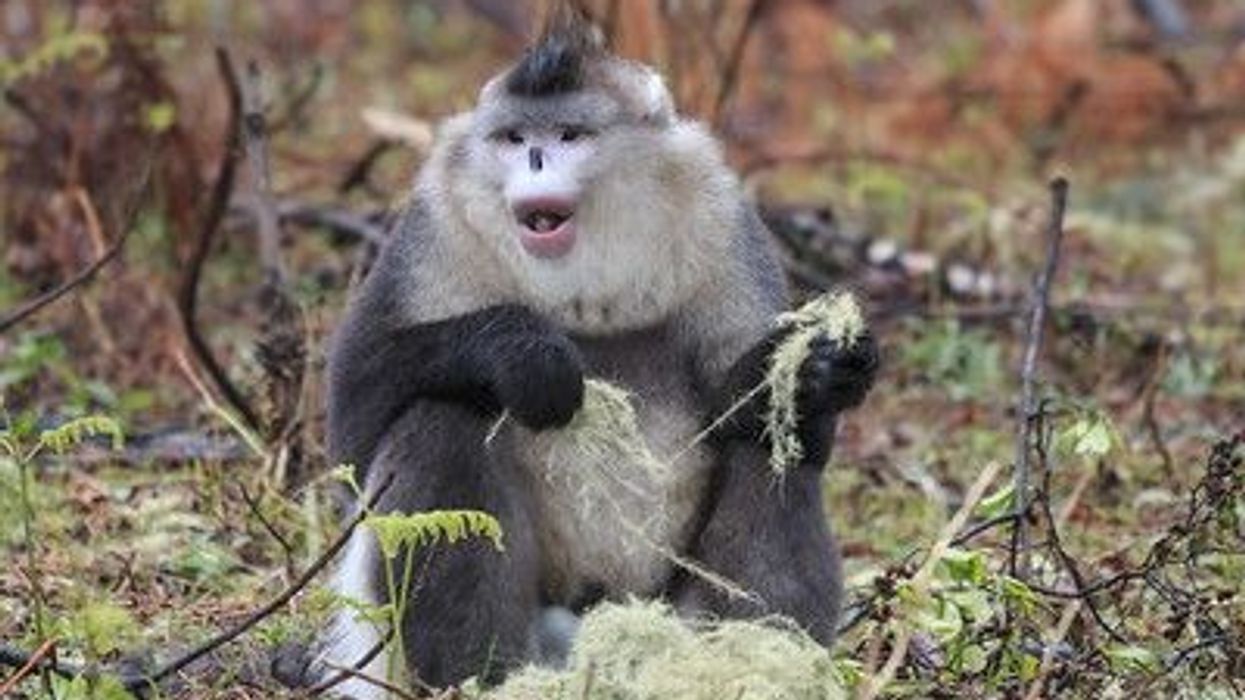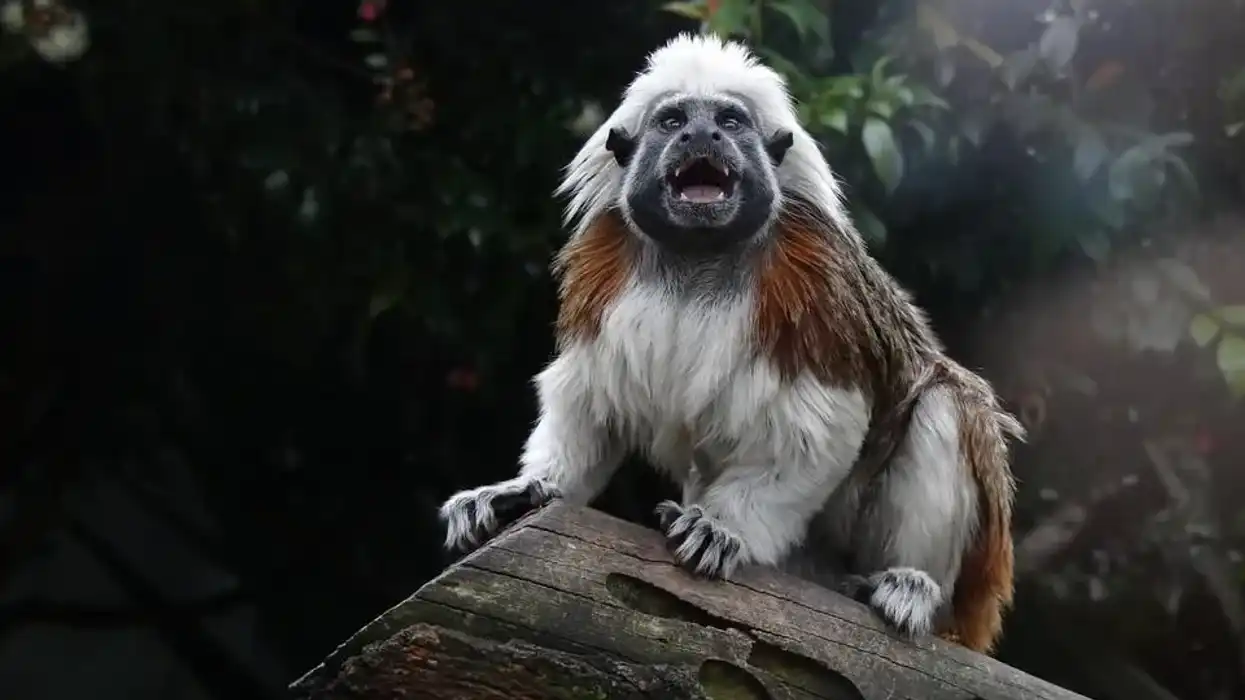The woolly monkey, which is also known as Humboldt's woolly monkey, is a species of monkey is native to regions of Amazonia, Southland forests, Brazil, Colombia, and other such areas.
There are a total of four species of woolly monkey namely, Lagothrix cana, Lagothrix lugens, Lagothrix poeppigii are species of the woolly monkey family that originate from the same order primates.
Colombian woolly monkey Lagothrix is large and muscular in appearance with tails that have the ability to grasp and hold a good grip on things and facilitate movement.
Their arms and legs are of equal length and have short fur which may range in different colors. A distinct feature is their face, which is either black or brown in color.
There are different species in the same family and they differ in their looks and abilities.
The difference in bodily structures exists between males and females of the woolly monkeys as well. Their predators include animals like eagles, jaguars, wild cats, and large reptiles living on the land.
They are considered an endangered species due to the excessive exploitation of the animals and their environment by individuals groups as well as organizations. In this article, we will explore some woolly monkey facts for kids and for others who are interested in learning about this unique monkey as well.
If you like this article, visit our fact files on the vervet monkey and squirrel monkey too.
Woolly Monkey Interesting Facts
What type of animal is a woolly monkey?
Woolly monkey is a type of monkey that is known for its prehensile tail and primarily consuming fruits, leaves, and seeds.
What class of animal does a woolly monkey belong to?
Woolly monkeys belong to the mammal class of animals. They also are playful beings and engage in activities like chasing, biting each other, and wrestling.
How many woolly monkeys are there in the world?
The exact estimate of how many are present in the world is unknown. However, due to the excessive impact of global warming, their population is at risk and classified as threatened.
Where does a woolly monkey live?
They live in tropical lowland forests, cloud forests, hilly forests, and palm swamps as well. They reside in forest areas and are active throughout the day and spotted sitting on tree branches. They are seen resting during mid-day in the trees or areas nearby.
What is a woolly monkey's habitat?
Woolly monkeys are found majorly in the Amazonian region, South America, Brazil, and Columbia, where they have adequate forest and rain cover and space for them to move around and survive. They cannot survive in an extreme climate like cold winter weather and need a temperate climate to survive.
Who do woolly monkeys live with?
Woolly monkeys live with their own kind i.e. in packs as other animals in the wildlife together. These wild animals need to be given the right to live peacefully by restricting encroachment of their areas primarily done through the destruction of their habitat.
How long does a woolly monkey live?
A common woolly monkey can live a long for up to 30 years depending on the social and environmental conditions it lives in. This is a relatively long life considering the lifespan of other wild animals.
How do they reproduce?
Woolly monkeys are polygamous and express particular behavioral patterns to give signals to the other mates. Mating occurs all year round.
At one time it can last up to close to five minutes. During this time, the female woolly monkeys may mate with multiple males within the group.
There is also the probability of fights in which female woolly monkeys participate to distract other mating couples, namely to distract other females. However, males do not engage in any such thing. Post-birth, female woolly monkeys remain inactive sexually for a period of two years.
This cycle continues subsequently. The male woolly monkeys stay along with the mother and the offspring only for the initial few weeks and then the mother solely takes care of the child until it attains the ability to care for itself and live independently.
What is their conservation status?
They are most threatened by humans due to illegal practices like killing and destruction of their habitats. Their bodily mass is used as ingredients for medicines due to some scientific health benefits associated with the same. They, therefore, have the conservation status of Vulnerable.
What do woolly monkeys look like?
Woolly monkeys' bodies are covered in fur and hence their name 'woolly' monkeys. They are also known for their unique tail which they make use of for locomotion.
Only woolly monkeys have such a unique and long-tail. Their hands and legs are equal in length and have fur on their body of colors; you can find a gray woolly monkey, brown woolly monkey, and also a sandy yellow woolly monkey. They are considered the largest primate among the other species that dwell in the forest.
How cute are they?
Woolly monkeys Lagothrix lagotricha are cute to watch from a distance. The unique species of monkeys are known for their distinct features like their prehensile tail which they use for moving from one place to another and they are amazing primates to marvel at.
However, it is not advisable to get close to them as they tend to become defensive and may harm you.
How do they communicate?
Woolly monkey species communicate through three channels: firstly contact calls, secondly alarm calls, and lastly, interaction calls. The first happens both at long and short distances with varying levels of frequency.
The second usually involves barking of a kind to alert the other mates of the same species of threats that arise if any.
The last one usually involves a sound that shrieks and whines which happen in instances of problems like rejection by other mates or while being attacked by their own or other predators.
Although one might find it difficult to recognize these, they have certain vocal forms of communication using their body as well namely, teeth clattering, head shaking, and shaking tree branches.
How big is a woolly monkey?
Adult woolly monkeys are approximately 40-60 cm in size which is ten times bigger as compared to adult pygmy marmosets which are the smallest species of monkeys who are 12-15 cm in length.
How fast can a woolly monkey run?
Woolly monkeys can run at speeds of 35 miles per hour which is slower than the patas monkey who is known as the fastest monkey and can run at 53 km in an hour.
How much does a woolly monkey weigh?
A woolly monkey weighs 16 lb (7.3 kg) approximately. Males of the species weigh more than female woolly monkeys. This is probably due to the difference in their anatomical structures.
What are their male and female names of the species?
The male and female of the species don't have any specific names and are addressed by the same name. There is a difference in their anatomical structures which helps distinguish the two from each other.
What would you call a baby woolly monkey?
A baby woolly monkey can be referred to as a neonate and is carried ventrally for the first few weeks by the mother after which they are carried on the mother's back.
By the age of six months, the baby gains the capability to move by themselves, by the seventh week they start mouthing and gradually moves to consume solid food.
What do they eat?
Woolly monkeys are omnivores and their diet consists of primarily fruits and seeds as well as insects like ants, spiders, beehives.
Are they loud?
Given that woolly monkeys make use of a range of communications both verbal and nonverbal and mostly through the use of sounds as signals, they can be considered loud animals. They are beings who articulate their sound depending on the need of the situation and so can sometimes be rather noisy.
Would they make a good pet?
Woolly monkeys are wild animals and it's best for them to reside in their habitat to survive. Given that their status is Vulnerable and their population in decline, they should not be in captivity. They are wild animals it is not appropriate to consider keeping them as pets.
Did you know...
Woolly monkeys have a minimum of one baby and are very possessive about their own kind. They mark territories for their own members to stay and this is in groups of 20 to 50. They are close to extinction and hence it's essential to know and learn about these monkeys.
Woolly monkeys (Lagothrix lagotricha) are considered important for seed dispersion since they primarily feed on fruits, which is beneficial for the environment. Double-toothed kites also follow woolly monkeys since they cause insects to move around, enabling them to see clearly for feeding. In turn, double-toothed kite birds can find prey easily and survive.
The Peruvian woolly monkey is also known as the yellow-tailed woolly monkey and is a new species found only in Peru. Silvery woolly monkey, also known as Poeppig's woolly monkey is found in Peru was named after the German zoologist Eduard Friedrich Poeppig.
There are other species like spider monkey known as brachyteles, woolly spider monkey, and the brown woolly monkey.
A woolly monkey named Barney played the role of Mona in the science fiction movie 'Robinson Crusoe On Mars' released in 1964 directed by Byron Haskin. The film was based on a novel written in 1719 by Daniel Defoe.
The role was to be played by a female woolly monkey but a male woolly monkey ended up playing the role by wearing a suit that hides their lower parts of the body. Barney was named after his owner.
Why are they endangered?
Woolly monkeys are a Vulnerable species and endangered in nature since they are hunted by humans and due to excessive urbanization, there is the loss of habitat as well.
Does anyone keep woolly monkeys as pets?
Although keeping monkeys as a pet is not a new phenomenon keeping certain species of them is illegal and harmful for both the animal as well as the individual. This occurs due to the fact that their environments and habitat are different.
Other factors include the risk to their conservation status and vulnerability of being traded if owned privately for commercial purposes.
The woolly monkey is incapable of being trained as a pet and hence is not ideal to be kept as a pet at home.
Woolly monkeys are only accessible in the wildlife or in zoos like Basel Zoo in Switzerland and the Paris Zoological Park. Visiting these places is ideal to make sure one gets to see these unique animals before it's too late.
Through conservation activities, a proper environment is given to such unique species to ensure our future generations too can see them. This can be achieved through environmental reforms made to promote sustainable growth which benefits every living being.
The loss of such species created an imbalance in the ecosystem and in turn, affects the survival of other beings as well.
Here at Kidadl, we have carefully created lots of interesting family-friendly animal facts for everyone to discover! Learn more about some other mammals including patas monkey, or masked palm civet.
You can even occupy yourself at home by drawing one on our woolly monkey coloring pages.









